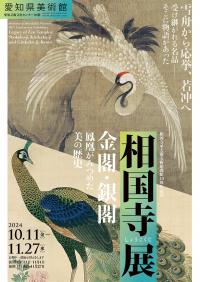Exhibitions
Legacy of Zen Temples: Shōkoku-ji, Kinkaku-ji and Ginkaku-ji, Kyoto (Oct. 11 - Nov. 27, 2024)
Outline
Shōkoku-ji, a temple located north of Kyoto Imperial Palace, was built in the late 14th century at the behest of Ashikaga Yoshimitsu, the third Muromachi shōgun. Some ten years after Musō Soseki, patriarch of the Musō sect of Rinzai Zen Buddhism, was invited to establish Shōkoku-ji, the large-scale complex was effectively completed by the priest Shun'oku Myōha. The temple headquarters, which includes sub-temples such as Kinkaku-ji (or Rokuon-Ji) and Ginkaku-ji (or Jishō-ji), houses countless old and renowned paintings, and has fostered important artists from every era. In 2024, a selection of these works was presented at the Jotenkaku Museum (situated within the temple precincts) to commemorate the museum's 40th anniversary. In this exhibition, we introduce the art of Kyoto by focusing on the influence of Shōkoku-ji as embodied by old paintings imported from China, works by famous monks such as portraits (chinsō), ink paintings, works by Muromachi-era monk-painters, Josetsu, Shūbun, and Sesshū, and masterpieces by artists such as the early Edo painter Kano Tan'yū and the mid-Edo painter Itō Jakuchū.
